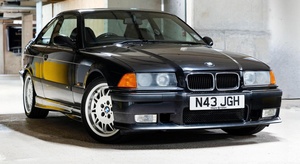
Quick tech question.
Think of a solid/fixed caliper, with twice the number of pistons as a comparable sliding / floating caliper: Would these two have the same hydraulic fluid displacement requirements (Provided the pistons are all the same size) ?
The rationale being that the sliding/floating caliper's piston has to move twice as much as the pistons of a solid/fixed caliper to give the same clamping pressure, so they kind of balance out. Does that sound right?
I ask because one upgrade to the platform I have is to replace the dual piston sliding calipers with four piston fixed calipers (whilst accommodating a larger rotor). As it happens, both these brake setups have the same piston sizes - only that the fixed caliper has 4 vs 2 for the sliding factory caliper as mentioned. Anecdotally, no master cylinder upgrades are necessary since pedal movement is apparently unaffected, and if anything, it is reportedly firmer and more easily modulated which I guess is due to brake caliper rigidity.
Please set me straight, if I'm wrong on this, as I've only been 'modeling' the experiment in my mind's eye (as opposed to conducting experiments and doing maths)
Thanks for the time.
randedge said:
Think of a solid/fixed caliper, with twice the number of pistons as a comparable sliding / floating caliper: Would these two have the same hydraulic fluid displacement requirements (Provided the pistons are all the same size) ?
The rationale being that the sliding/floating caliper's piston has to move twice as much as the pistons of a solid/fixed caliper to give the same clamping pressure, so they kind of balance out. Does that sound right?
they will be quite close for exactly the rationale you stated. any variation will be due to difference in caliper body stiffness (assuming both types had the same pad material).
As a side note: Is there really anything drastically or inherently wrong with the sliding piston caliper? I see them in dirt stock car classes, and they even make an aluminum single piston version.
In reply to VolvoHeretic :
I am also interested to hear the answer to this question^
My understanding is that sliding calipers tend not to apply force as evenly over the pad surface as fixed calipers with pistons on both sides, and thus are more prone to tapered pad wear.
They also flex more due to design limitaitons caused by straddling the rotor and fitting between pins. At the level of contact pressures seen at the pads, the uneven force distribution is very real for pedal feel and pad effectiveness. Fixed calipers have massive structure at the ends where sliding calipers just get chopped short.
I imagine the sliding part is less ideal too. Another failure point for one, but also I would think the extra friction and caliper movement would make for slower/less consistent engaging and releasing of the brakes.
Yep. Caliper drag is typically higher too. The one thing they do have going for them is they're a lot less sensitive to knockback if/when the rotor or spindle move around because the whole caliper blithely follows the rotor instead of unflinching (fixed caliper) pistons just getting pushed back.
In reply to Nockenwelle :
Thanks, TIL what blithely means. 


























